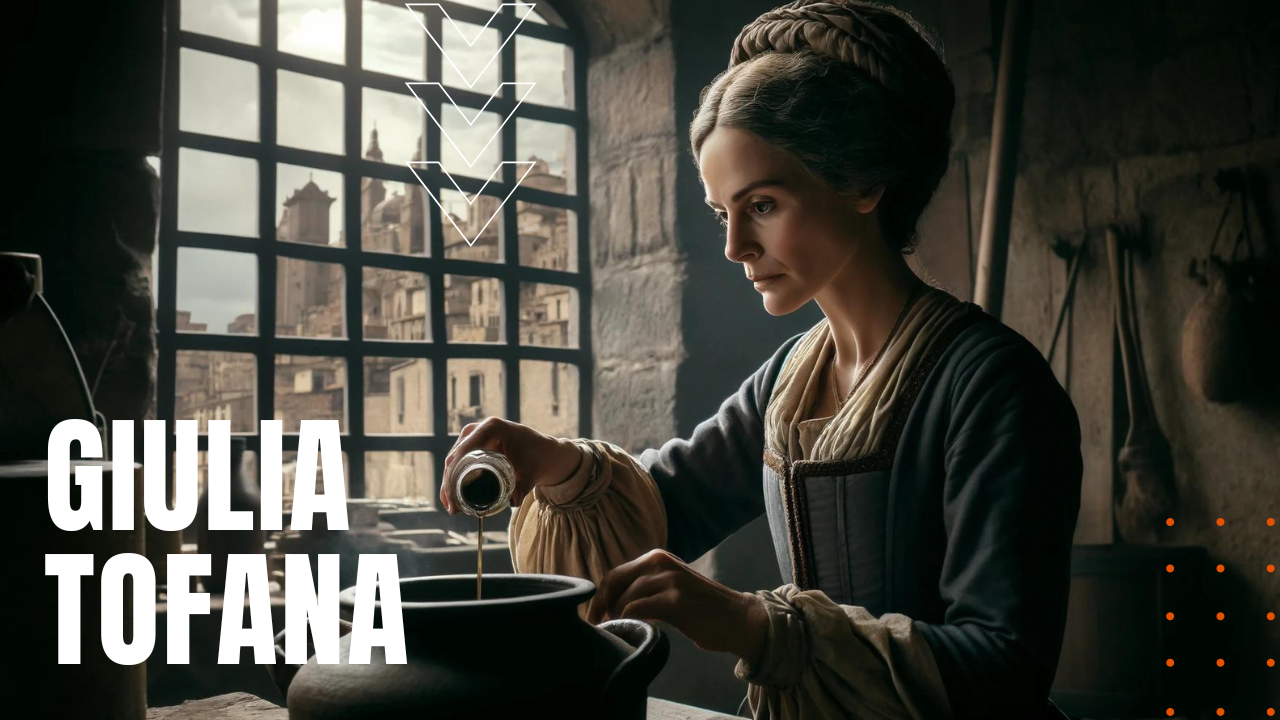Giulia Tofana: The Poison Queen of Italy

Born around 1620 in Palermo Sicily—an island off the southwestern coast of Italy, long known for its mafia corruption—Giulia Tofana learned her craft of making Agua Tofana from her mother, Thofania d’Adamo, the later executed on July 12th, 1633 for poisoning her own husband. Carrying on the family tradition, Giulia and her understudy daughter, Girolama Spara, moved first to Naples and later to Rome to escape mounting suspicions by local authorities, setting up a network of apothecary shops to sell legitimate anti-aging cosmetics for women, while under the table, they sold Agua Tofana for wives trapped in abusive or loveless marriages.
A Man’s World
In 17th century Italy, men were afforded unlimited rule over women, who in turn suffered untold abuses by their husbands due to a woman’s lack of standing in society and scant opportunities to better their situation without a man. Short on options, women could marry and hope for the best that their choice was a kind and loving man, while many abused women of the wealthier class sometimes turned to Giulia’s apothecary shop for a much more lethal tincture to hide amongst her many lotions and creams positioned on her nightstand or vanity. Oftentimes labeled as “Manna of St Nicholas of Bari,” which was a popular healing ointment meant to treat blemishes, Agua Tofana was a blend of lead, arsenic and belladonna that was odorless, tasteless and virtually undetectable, making many women wealthy widows in the wake of their matricidal application of Agua Tofana, with some sources pinning the death toll at 600 lives.
A Family Tradition
Steeped in mystery, urban folklore and possible embellishment, Giulia Tofana worked in close alliance with her daughter and a group of trusted associates—one purported to a Catholic priest. According to some sources, Giulia’s business thrived in Rome for more than two decades, until she was sold out by a woman who added Agua Tofana to her husband’s soup. As the story goes, the woman later pointed the finger at Giulia after she confessed her crime during an interrogation by local authorities. A second version of Giulia’s death tells of her apprehension in Rome, before she and her daughter were executed upon their forced confession, while a third version supported by most credible historians points to her death by natural causes in 1651, before anyone was aware of her murderous enterprise, making the life of Giulia Tofana, a masterful femme fatale of 17th century Europe.
